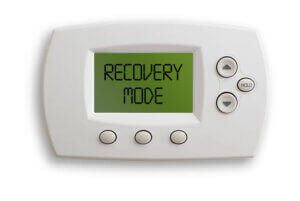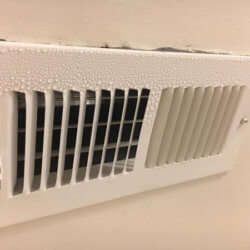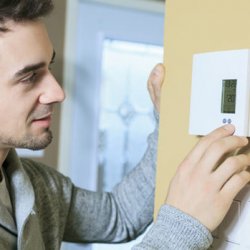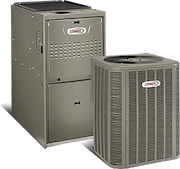So, your thermostat is saying "recovery mode" and you are wondering what it means. Well, you have come to the right spot! Most thermostat users often get confused when their device goes into recovery mode and do not know what to do next. If you are experiencing this issue, it is important to understand what thermostat in recovery mode actually means. Then you can determine the steps needed (if any) to remedy this.

At Galmiche & Sons, we are experts when it comes to all kinds of HVAC and thermostat issues. Whether your thermostat is in recovery mode or you have other questions, our heating and air conditioning experts can help. In St. Louis, contact us online or call us today to get answers you need to this and all of your HVAC questions.
What Is the Recovery Mode on Your Thermostat?
Almost every modern and programmable thermostat comes with a recovery mode feature. So, if you have recently upgraded your unit, seeing "thermostat in recovery mode" can leave you worried. However, while recovery mode can sound daunting, it is really just part of a normal operating process.
The feature is basically designed to help your thermostat and the rest of the HVAC unit to work together more efficiently. When the recovery mode is activated, it simply means that your thermostat is adjusting the temperature in your home to ensure it reaches your desired temperature at the scheduled time.
When and Why Does Recovery Mode Happen?
Now that we have a clear idea about what the recovery mode feature does, let us have a look at some reasons why it gets activated:
- You may have programmed it like this: If you have scheduled different temperatures for different times of the day, your thermostat will adjust to reach the desired temperature 1 to 2 hours before your scheduled time. During this time, it will be in recovery mode as the temperature adjusts to your programmed schedule.
- Your HVAC system has been turned off for an extended period: This is another common reason that can take your thermostat into recovery mode. If your house has been vacant for a long time or you have been on a vacation, the thermostat will go into recovery mode once you turn on your HVAC system. This simply means that your system is working to bring the temperature inside to your set temperature.
- You just recently adjusted the temperature: Making sudden major changes or deviations to the temperature in your house can also cause your thermostat to be in recovery mode as the temperature adjusts.
- Your HVAC might be damaged: If none of the above reasons apply, there might be something wrong with your HVAC unit. In such a case, make sure to contact your HVAC company and get your system checked.
It Is a Problem If Your Thermostat is in Recovery Mode?

In most cases, your thermostat being in recovery mode is not necessarily the sign of a problem. However, if your thermostat keeps on going into recovery mode randomly or it is experiencing other glitches, there might be some serious issues with your system.
Additionally, if your HVAC system is unable to heat or cool your home, it is smart to get in touch with your local HVAC professional for assistance. They can help diagnose the problem and recommend the best course of action.
Call Galmiche & Sons for All Your Thermostat-Related Needs in St. Louis
If you have additional questions about your thermostat or your are experiencing HVAC problems in your St. Louis area home, Galmiche & Sons can help. As a leading HVAC company in St. Louis, we have been helping people resolve their thermostats and other heating and cooling issues since 1950.
Whether you need help with troubleshooting your home’s heating or cooling devices or want to get your system installed or repaired, we have you covered. We can help you figure out why your thermostat is in recovery mode and get rid of the issue quickly. Call us today to schedule your appointment for HVAC maintenance or learn more.












